Heartbeat of a pneumatic ship unloader

Measuring a car’s speed is done via the speedometer, and measuring an aircraft’s flight altitude is done via the altimeter, but how can we monitor the performance of a pneumatic conveying system? There are limited possibilities, one of which is measuring the “heartbeat,” which provides the operator with all information on the vital condition of the operation.
Operation of Pneumatic Conveying
The conveying process of a pneumatic ship unloader includes some key components, such as a Vacuum pomp, Manipulator Arm, Storage Tank, Compressor, Valves, Control System, and Measuring Instrumentation.
The process is divided into steps of the interaction between the key components and separated into:
1. Suction cycle (collecting the cargo)
2. Pressurization cycle (building pressure into the storage tank)
3. Discharge cycle (convey the cargo to shore)
4. Venting cycle (prepare the system for suction cycle)
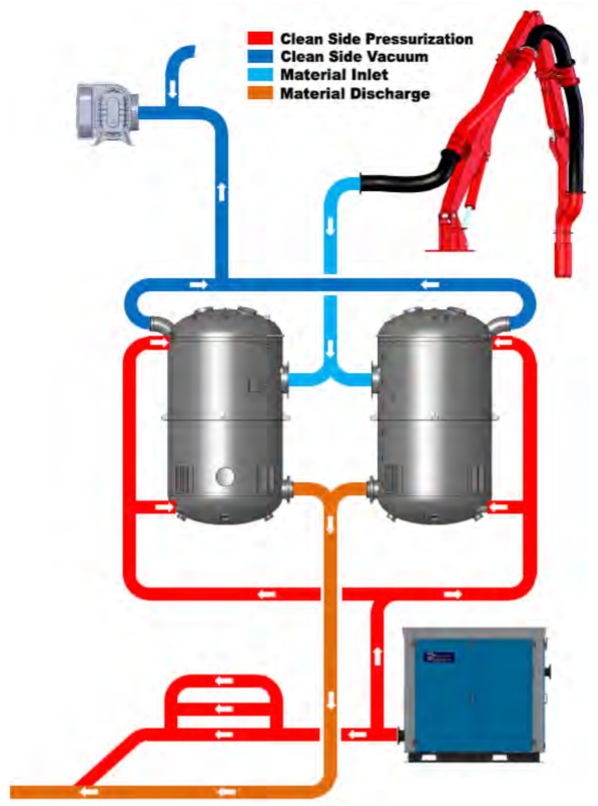
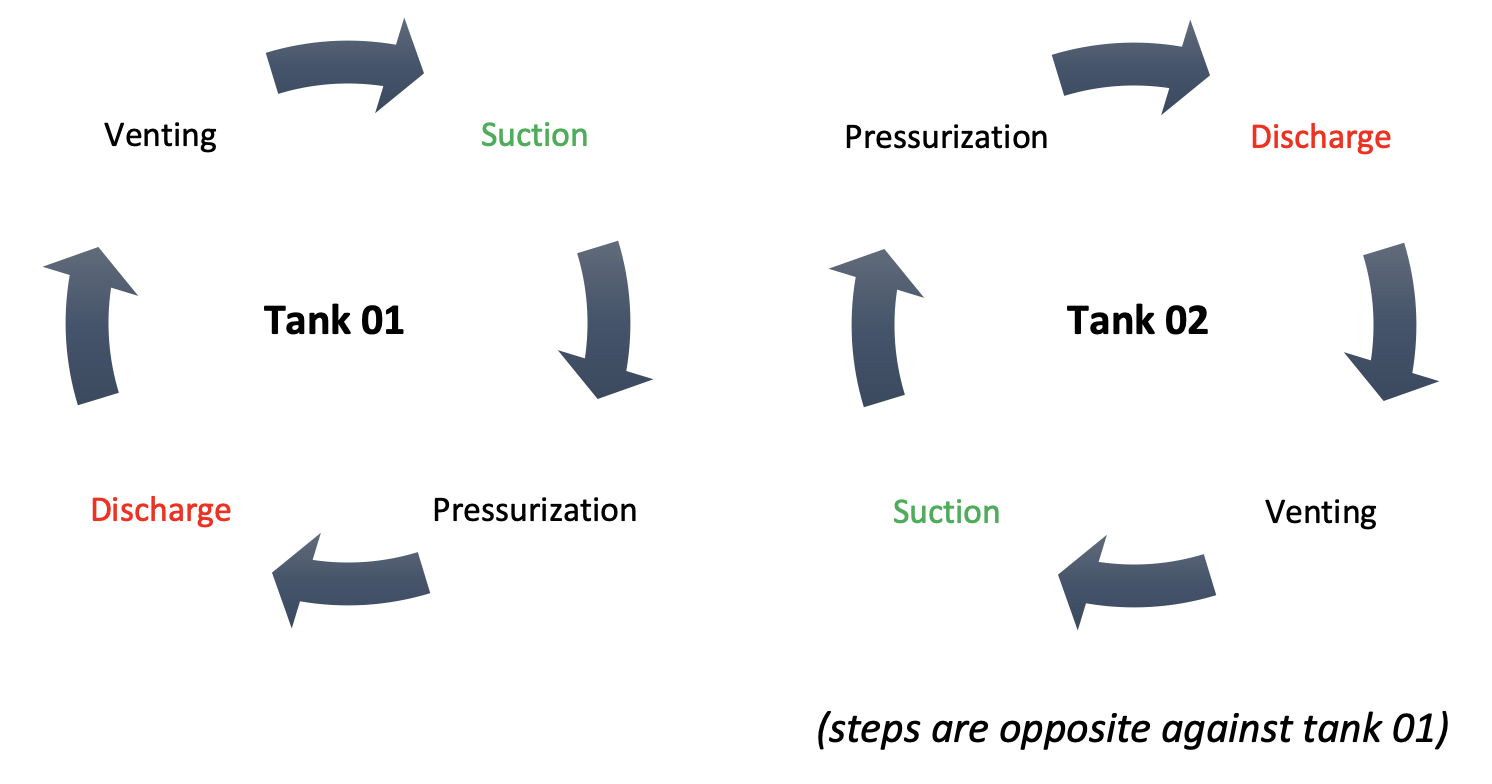
Monitoring via the “Heartbeat”
Each step has its own start and end phase based on a specific pressure, which the PLC monitors via pressure transmitters. Let’s assume that the PLC will collect a pressure sample each second; we can visualize this in the following illustration per tank within a timeframe:
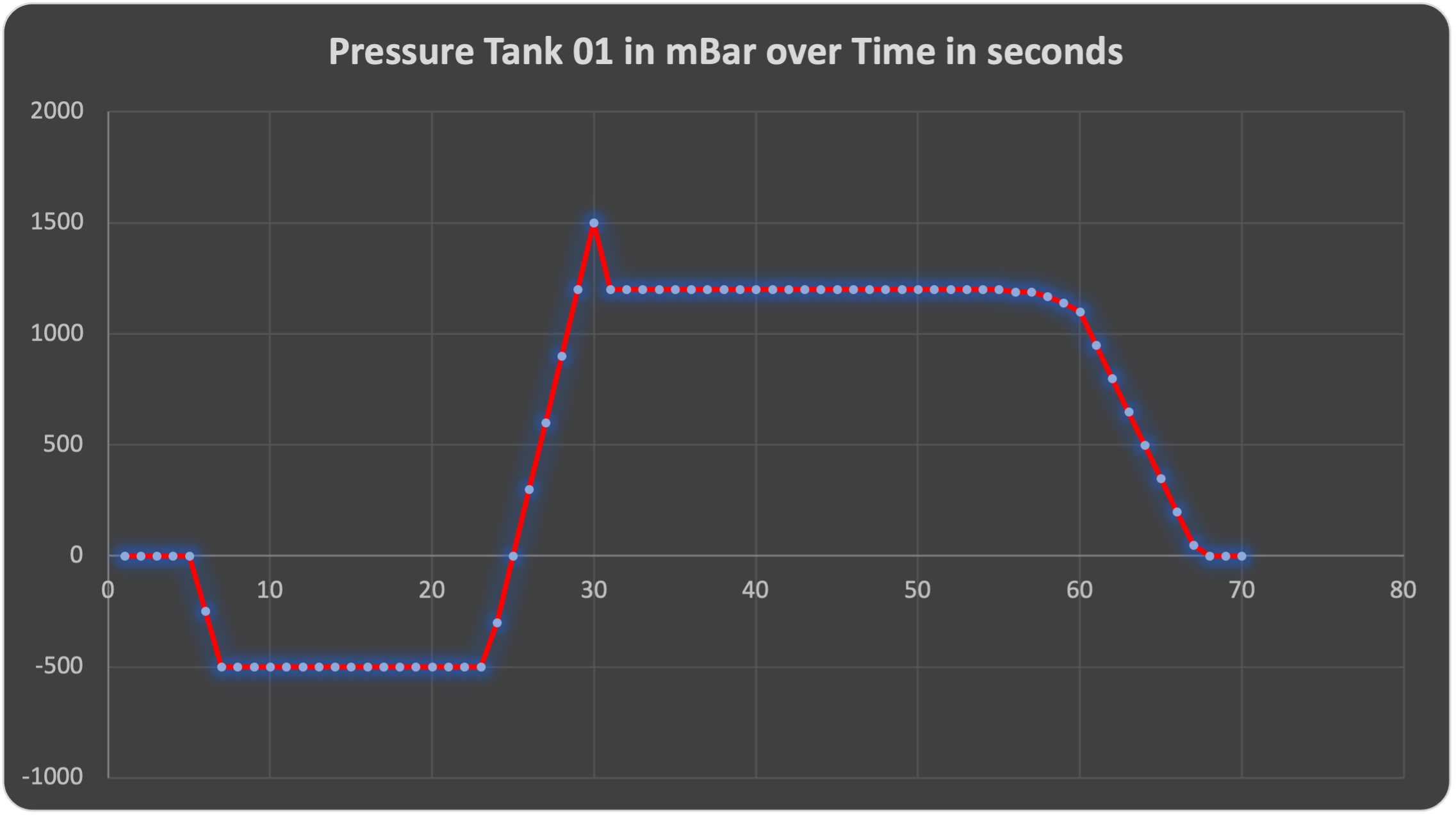
Based on this trend, we can now add each step:
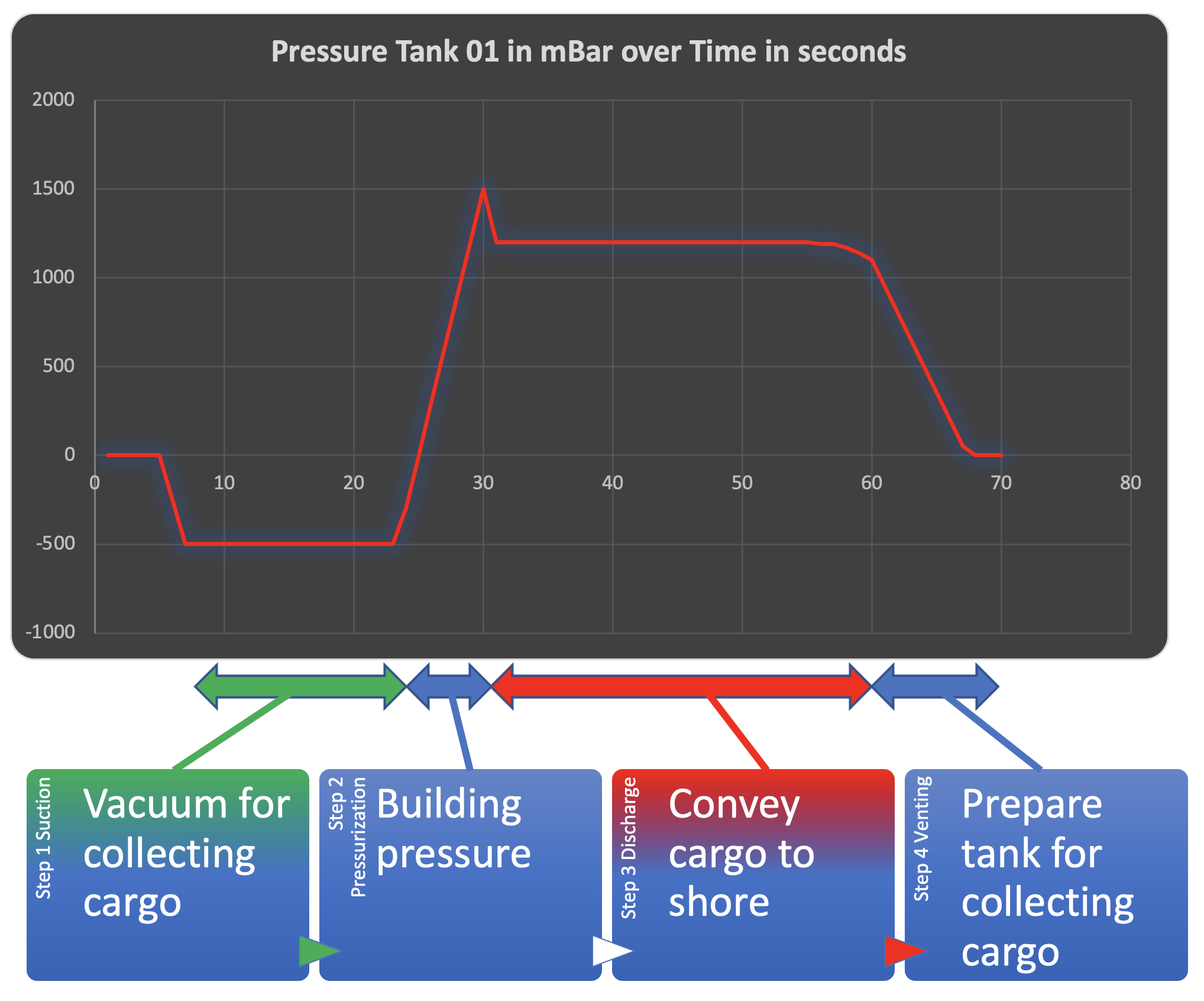
Evaluating
By visualizing the pressures over time, the operator can now live to observe the condition of each step and, where needed, alter some parameters, gaining better performance.
The above illustration shows that the Suction step is shorter than the Discharge step for conveying the same amount of cargo to shore. If tuning and tweaking will be executed, the system’s first attention/focus should be on the Discharge step.
The needed type of constructive attention will vary according to different influences, factors, and skills.
An article about a case study can be found here: Tuning and Tweaking.
Much attention is given to maintenance only, while a higher efficiency ratio can be achieved via tuning and tweaking via digital technology like this heartbeat by a correct expert party.
More Information
Lion Bulk Handling can perform this acquisition for you based on more than 55 years of experience in this industry. Book your visit here: http://www.lionbulkhandling.com/contact/
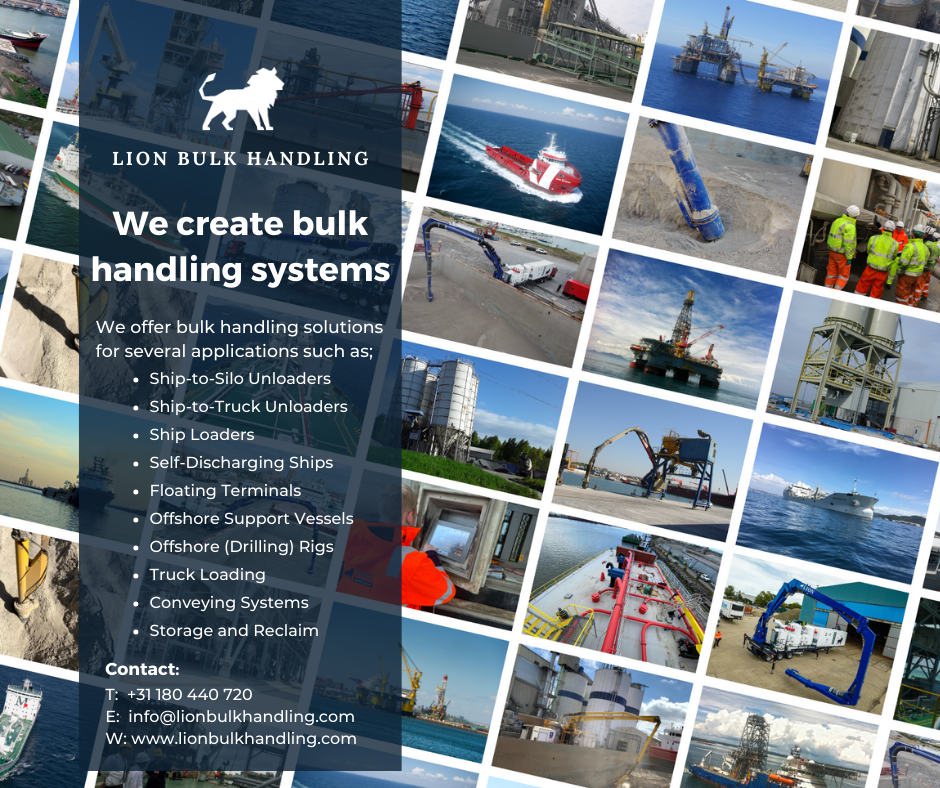
Lion Bulk Handling Solutions
In conclusion, investing in efficient bulk handling systems is paramount for businesses looking to streamline their operations and maximize productivity. Whether you’re in the manufacturing, cement, offshore or maritime industry, optimizing your material handling processes can lead to significant cost savings and improved efficiency.
If you’re interested in learning more about how bulk handling systems can benefit your business, don’t hesitate to reach out to us. Our team of experts is here to provide you with tailored solutions and answer any questions you may have. Contact us today for more information and take the first step towards enhancing your operations.


